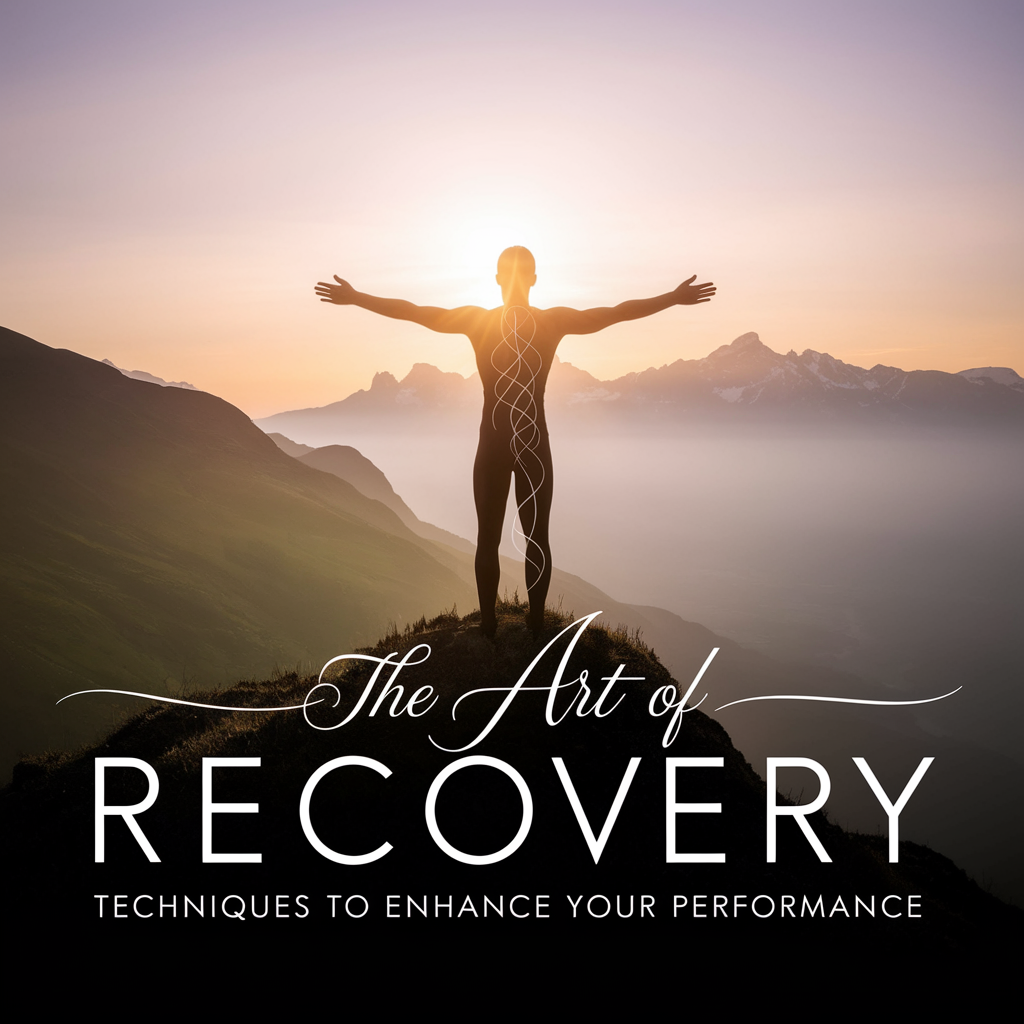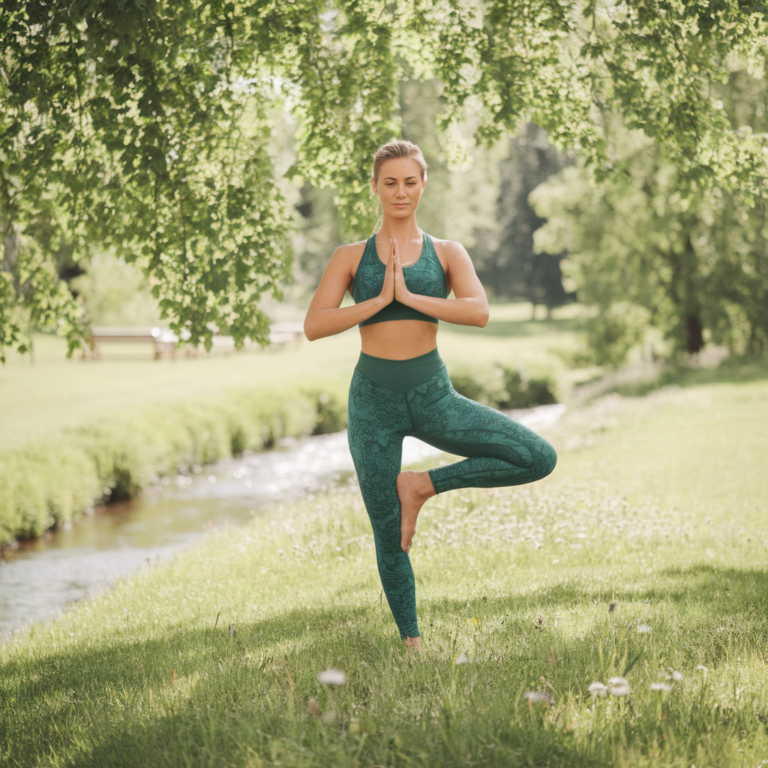The Art of Recovery: Techniques to Enhance Your Performance
In the fast-paced world of sports and fitness, there’s a common misconception that success hinges solely on rigorous training and relentless practice. But if there’s one truth that seasoned athletes and fitness enthusiasts have come to embrace, it’s this: recovery is just as crucial, if not more so, than the sweat and tears shed during workouts. After all, how can one expect to perform at their peak if they are running on empty? So, let’s dive into the art of recovery—the unsung hero of athletic performance—and explore some tried-and-true techniques that can elevate your game.
The Science Behind Recovery
Before we get into the nitty-gritty of recovery techniques, it’s worth taking a moment to understand the science behind it. Recovery is not merely about resting; it’s a complex physiological process that allows the body to repair itself, replenish energy stores, and adapt to the stress imposed by training. Just like a smartphone that needs to recharge after a long day of heavy usage, our bodies require downtime to restore their functionality.
Research suggests that during recovery, muscles undergo repair and growth, inflammation decreases, and the nervous system resets. For instance, a study published in the Journal of Sports Sciences found that athletes who incorporated adequate recovery strategies saw improved muscle performance and reduced injury rates. It struck me that while we often glorify the grind of training, we should equally celebrate the art of recovery. (I mean, who doesn’t love a good nap?)
Active Recovery: The Gentle Touch
Active recovery has become quite the buzzword in athletic circles. So, what is it? Simply put, active recovery involves engaging in low-intensity exercise after a workout. The idea is to promote blood flow to the muscles without adding undue stress.
One of my fondest memories of active recovery was during a particularly grueling marathon training season. After long runs, I’d often hop on my bike for a leisurely ride through the park. The gentle pedaling worked wonders for my sore legs, helping to flush out lactic acid while allowing me to enjoy nature. Plus, it was an excellent excuse to grab a coffee at my favorite café afterward!
Techniques for Active Recovery
- Walking or Jogging: A short, easy-paced walk or jog can be great for loosening up tight muscles.
- Swimming: The buoyancy of water reduces strain on the joints, making it an ideal choice for active recovery.
- Cycling: Just like my biking adventures, cycling can be an effective way to keep moving without overexerting yourself.
According to experts, integrating active recovery into your routine can enhance your overall performance by improving flexibility, reducing muscle soreness, and boosting mental well-being. Sounds pretty appealing, doesn’t it?
The Power of Sleep
Ah, sleep—the magical elixir that seems to be the antidote to everything from stress to fatigue. It’s no secret that quality sleep is vital for recovery, but many athletes underestimate its importance. Sleep isn’t just a time-out; it’s a crucial phase during which the body repairs and regenerates tissues, synthesizes proteins, and releases hormones essential for growth and recovery.
Research indicates that athletes who get enough sleep tend to have better performance metrics, improved reaction times, and lower rates of injury. I recall a time when I tried to function on minimal sleep during a training camp. Let me tell you, my performance took a nosedive. When I finally prioritized sleep, the difference was night and day—pun intended!
Strategies for Better Sleep
So, how can you improve your sleep quality? Here are a few tips:
- Create a Sleep Schedule: Going to bed and waking up at the same time every day can help regulate your body’s internal clock.
- Limit Screen Time: The blue light emitted from screens can interfere with melatonin production. Try to unplug at least an hour before bedtime.
- Create a Relaxing Environment: Keep your bedroom cool, dark, and quiet. Consider using blackout curtains or a white noise machine.
Incorporating these strategies into your routine can pave the way for better sleep and, consequently, enhanced recovery. Rest assured—pun intended—that your body will thank you!
Nutrition: Fueling Recovery
Let’s talk about the role of nutrition in recovery. It’s often said that you can’t out-train a poor diet, and this holds especially true in the realm of recovery. Consuming the right nutrients post-exercise is essential for muscle repair, replenishing glycogen stores, and reducing inflammation.
Some studies suggest that a combination of carbohydrates and protein is most beneficial for recovery. Carbs help replenish glycogen, while protein provides the building blocks necessary for muscle repair. For me, the perfect post-workout snack is a smoothie packed with bananas, spinach, and a scoop of protein powder. It’s refreshing and gives me that much-needed boost!
Essential Nutrients for Recovery
Here’s a quick rundown of some vital nutrients to consider:
- Carbohydrates: Whole grains, fruits, and vegetables are excellent sources.
- Proteins: Lean meats, fish, eggs, and legumes are fantastic choices.
- Healthy Fats: Avocados, nuts, and seeds help reduce inflammation.
Of course, hydration is equally important. Dehydration can impair recovery and performance, so be sure to drink plenty of water before, during, and after exercise. (I once made the mistake of thinking coffee counted as hydration. Spoiler alert: it doesn’t!)
Stretching and Flexibility
Ah, stretching—the humble art that so many of us overlook in our quest for gains. Incorporating stretching into your routine is crucial for maintaining flexibility and preventing injuries. It’s like giving your muscles a gentle hug after a hard workout.
Dynamic stretching before a workout can prepare your muscles for action, while static stretching afterward can help in cooling down. I remember a time when I skipped stretching entirely because I was too eager to get home. Let’s just say my hamstrings were not amused.
Types of Stretching
- Dynamic Stretching: Engaging in movements like leg swings or arm circles before workouts warms up the muscles.
- Static Stretching: Holding stretches (like reaching for your toes) after exercise helps maintain flexibility.
- Foam Rolling: This self-myofascial release technique can alleviate muscle tightness and improve blood flow.
Incorporating stretching into your routine can not only aid recovery but also enhance your performance in the long run. Remember, flexibility is key—just like that yoga instructor who effortlessly bends into a pretzel shape!
Mental Recovery: The Overlooked Aspect
While we often focus on the physical aspects of recovery, mental recovery is equally important. The mind and body are interconnected, and mental fatigue can hinder performance just as much as physical exhaustion. Stress, anxiety, and burnout can leave an athlete feeling drained and unmotivated.
In my own experience, I’ve found that taking time for mental recovery—be it through meditation, deep breathing exercises, or simply spending time in nature—can have a profound impact on my overall well-being. (And hey, who doesn’t feel rejuvenated after a walk in the park?)
Strategies for Mental Recovery
- Meditation: Even five minutes of mindfulness can help clear your mind and reduce stress.
- Visualization: Picture yourself succeeding in your sport. It’s a powerful tool that can help improve confidence and focus.
- Connect with Nature: Spending time outdoors can provide a mental reset and boost your mood.
Incorporating mental recovery techniques into your routine can set you up for success. After all, a healthy mind can be the secret weapon that propels you to new heights!
Listening to Your Body
Perhaps one of the most important aspects of recovery is simply listening to your body. In a culture that often glorifies pushing through pain and discomfort, it’s essential to recognize when your body needs a break. Ignoring signs of fatigue can lead to burnout, injuries, and setbacks.
During my years as a runner, I’ve learned the hard way that it’s better to rest than to risk injury. I can’t tell you how many times I’ve tried to power through a workout only to pay the price later. The body has a remarkable way of signaling its needs—be it through fatigue, soreness, or even mood changes. It’s crucial to be in tune with those signals.
Signs Your Body Needs Recovery
- Persistent Fatigue: If you’re feeling drained even after a good night’s sleep, it might be time to take a step back.
- Frequent Illness: A weakened immune system can be a sign of overtraining.
- Increased Injuries: If you’re experiencing more aches and pains than usual, listen to your body’s warning signs.
Embracing recovery as an essential component of your routine can enhance your performance in ways you may not have imagined. It’s all about finding that balance between training hard and allowing yourself the grace to recover.
Incorporating Recovery into Your Routine
Now that we’ve explored various recovery techniques, the next step is figuring out how to incorporate them into your routine. Recovery doesn’t have to be an afterthought; it can be woven seamlessly into your training regimen.
Start by creating a weekly schedule that includes specific recovery days, active recovery sessions, and time allocated for sleep and nutrition. Maybe you designate Sundays as your “recovery day,” where you indulge in light stretching, a leisurely bike ride, and a wholesome meal prep session. It’s all about finding what works best for you.
Real-Life Examples
To paint a clearer picture of how recovery techniques can enhance performance, let’s take a look at some real-life examples from the sports world. Athletes like LeBron James and Serena Williams have been vocal about the importance of recovery in their training routines. James famously spends over a million dollars a year on his body, employing top-notch trainers, massage therapists, and recovery specialists.
Likewise, Williams has emphasized the significance of mental recovery, often sharing her own meditation practices to help her stay grounded amidst the pressures of competition. These athletes are living proof that prioritizing recovery can lead to sustained success in their respective sports.
The Road Ahead
As we conclude this exploration into the art of recovery, I hope you’ve gleaned some valuable insights. Whether you’re a seasoned athlete or a weekend warrior, remember that recovery is more than just a buzzword—it’s an essential part of your journey to peak performance. By incorporating techniques like active recovery, prioritizing sleep, fueling your body with nutritious foods, and nurturing your mental well-being, you can set yourself up for success.
So go ahead and embrace the art of recovery. After all, in the grand game of sports and fitness, it’s not just about how hard you train but how well you recover. And who knows? You might just find that those rest days become your favorite part of the week.
Happy recovering!









